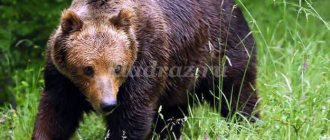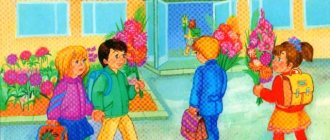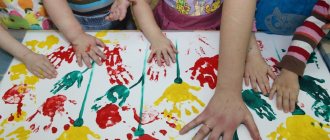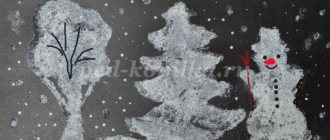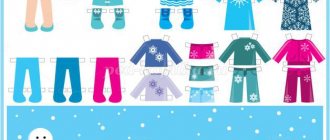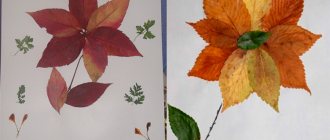Exciting activities for children aged 3 to 4 years in drawing with colored pencils, gouache and watercolors in traditional and non-traditional ways develop aesthetic perception. Kindergarten is the best place for developing emotional responsiveness, cultivating a sense of beauty, developing imagination, independence, perseverance, accuracy, hard work, and developing visual skills.
Fine arts lesson on the topic “Planes are flying” in junior kindergarten groups
Before preparing a lesson for children in the younger groups of kindergarten, you need to choose an interesting topic. In the process of visual activity, children must reflect life impressions. Drawing in the second junior group “Planes are flying” teaches you to depict objects and phenomena that form clear ideas about the environment.
Fine art lesson on the topic “Planes are flying” for younger groups
Example of drawing lesson notes
The program content should contain children's material, which must be conveyed in a drawing, reflecting the phenomena of modern life. Kids can draw airplanes flying in the sky. In addition, children should learn to draw straight lines in different directions when drawing objects related to flight. This technique contributes to the development of aesthetic perception.
Preview:
Municipal state preschool educational institution
Buturlinovsky kindergarten No. 10
Author: teacher of the 1st junior group: Panchenko L.I.
Summary of continuous educational activities in the 1st junior group.
Topic: “Road for a car”
Educational field: artistic and aesthetic development. Integration of educational areas: cognitive development, speech development Type of activity: productive, cognitive-research, communicative Form of work: workshop for the production of children's creativity products Tasks: - awaken interest in drawing, teach how to draw straight lines with a brush; - consolidate the concept of “contrasting sizes” (“big”, “small”) - form a clear and correct pronunciation of the sounds b, b`, practice pronouncing individual onomatopoeias loudly and quietly; Enter the word “car” into the active dictionary. Organization of the development environment:
Preliminary work: examining the cars, what parts they consist of.
Organization of children: subgroup Duration: 10 minutes Structure of joint activities: - Motivating children to activity; — Setting goals for activities by children; — Joint work to find funds; — Independent activity of children; - The discussion of the results.
2. Models of complex-integrated classes with children 1.5 – 7 years old / comp. S.S. Dreher, A.N. Poked. – Volgograd: Teacher, 2013.
Source
Lesson Objectives
The main task is to form a self-sufficient, multifaceted, creative personality. Drawing for the 2nd junior group “Planes are flying” promotes the development of creative and cognitive activity and the enrichment of new knowledge. The child begins to get acquainted with the world around him.
Important! If you use non-standard materials and techniques, then you can easily interest children in visual arts. This method turns the process into an interesting hobby.
Airplane drawing problems
Educational tasks:
- develop the ability to listen carefully to the teacher’s explanation;
- cultivate positive emotions from classes and free motor activity;
- develop the ability to interact and establish contacts with adults and each other through speech;
- cultivate interest in drawing and evoke an emotional response.
Developmental tasks:
- develop the ability to independently and at the request of an adult take part in conversations;
- increase curiosity and cognitive interest in transport objects;
- develop fine motor skills, auditory perception, clarify and consolidate the articulation of the sound “u”;
- promote the development of skills in expressive and emotional transmission of game images.
Summary of drawing lesson “Transport. Types of transport" (in the first junior group)
Elena Olegovna Roo
Summary of drawing lesson “Transport. Types of transport" (in the first junior group)
Purpose: Repetition of types of transport. Drawing wheels on a trailer using a stamp.
Tasks:
— Expand knowledge about the size of vehicles (large, small, and also name trucks, cars, buses, trams and main parts: cabin, steering wheel, body.
— Teach how to use paints and stamps, do the work carefully and correctly.
— Develop fine motor skills.
— Develop creative thinking and interest.
— Consolidate knowledge about color.
Materials for the lesson (demonstration and handouts):
— toy cars (cars, trucks);
— pictures with a bus, tram, trolleybus.
— Blanks for drawing (cars from a steam locomotive);
— Stamps (bottle caps with fabric glued on a flat, round surface);
— Musical accompaniment (sound of cars, song “Locomotive”).
Progress of the lesson:
The sound of cars is heard. A truck pulls in, and Vaska the cat is on it.
— Check, do all cars have a steering wheel and wheels? (Children's answers).
— What should a car have so that the driver can get into it? (Children's answers).
- That's right, they have a door. What sound do we hear when the door opens? (Zipper)
- What is this? (Children's answers)
- That's right, it's a train. And now you and I will go on a journey on a train, we all get up one after another and go... (to the song “The Train”).
— That’s right, trailers (I show a picture of a trailer without wheels)
— What is missing from the trailer? (Children’s answer: wheels)
- That's right, guys. Let's help the trailer find its wheels.
Children sit at the table, each with a trailer of a different color.
— What is missing from the trailers? (wheels).
- Let's draw wheels.
We carefully lower it and press the stamps.
They held it for a while and lifted the stamps together.
I show you the drawing technique. The trailers now have wheels.
- Let's hitch our trailers to the train. (We draw up an overall picture on the poster.)
The cat Vaska says goodbye to the children.
Reflection:
- Guys, tell me, who came to visit us today? (Children's answers)
- What car? (Children's answers)
— What cars do you know? (Children's answers)
- What do we have at the car? (Children's answers)
Didactic game “Modes of Transport” Purpose: To promote children’s ability to name, distinguish, and classify different types of transport. The game can be used in different ways.
Materials and equipment needed for the lesson
Materials and equipment to perform the work
For the lesson to go perfectly, you need to select a sheet of light blue paper, light gray gouache paints, brushes, jars of water, paper and cloth napkins, an easel, a toy aircraft, pictures of an airliner, a poster with flying planes.
Two toy airplanes are suitable as demonstration material.
For your information! From the handouts, it is recommended to prepare a large sheet of paper on which the flight of an airliner is depicted.
Progress of the lesson:
So that I can take you
I don't need oats.
Feed me gasoline
Give me rubber for my hooves,
And then, raising dust,
He will run. ( Automobile )
.
- That's right, this is a car . Have you seen how many cars are on the streets of our city? And they are all different. What cars did you see on the way to kindergarten? (Children's answers)
.
-What color are they?
There are different cars -
Blue and red
The tires rustle loudly,
They are in a hurry to go to kindergarten.
— One of the cars came to us for a lesson (showing a toy)
. Let's look at it. What colour is he? What parts does it consist of?
- Let's try to draw a car . But every driver wants his car to be special. He chooses a car of the color he likes. (Ask the children what color they want to paint their car ).
a drawing of a car on your tables . You will carefully paint them with your favorite color and draw wheels. And then our car will be able to drive along the city street.
— See how to carefully paint a car . Mine will be red. I take the brush by the iron skirt, wet it in water, then pick up paint, and remove excess paint on the edge of the can. I move the brush along the drawn line without lifting it from the sheet. I carefully paint the car . I rinse the brush in the jar and dry it on a napkin. I take black paint on a brush, trace the outline of the wheels and paint over them.
- Let's take brushes and try to trace the contour of the car .
- Now choose the paint that you need for your car .
Independent work of children (the teacher provides individual assistance.)
At the end of the lesson, the children's drawings are placed on a pre-prepared image of a city street . Together with the children, the teacher examines the drawings and notes their careful execution.
Preliminary work with children, discussion of the topic
At the first stage, the image of the aircraft is examined, the idea of the features of the appearance of the airliner (flying in the sky, through the air) is clarified. In addition, it is possible to sculpt an airplane and read a fairy tale.
Demonstration of materials
Which image to choose for printing on paper
Before choosing a sample to put on paper, the teacher introduces the children to the world of art. This method serves to develop a basic understanding of works of decorative and applied art and architecture. The teacher invites the kids to look at the template - an airplane.
Familiarization with the outside world in the junior group of preschool educational institutions
On the topic: methodological developments, presentations and notes
Topic: “Spring days” Goal: To promote the development of children’s cognitive activity, to enrich their ideas about spring natural phenomena.
Notes on walks with children of the first junior group.
Goal: To consolidate and expand children’s initial knowledge about domestic animals and birds. Objectives.
Goal: To consolidate and expand children’s initial knowledge about domestic animals and birds. Objectives.
Goal: To consolidate and expand children’s initial knowledge about domestic animals and birds. Objectives.
Summary of the final lesson in the first junior group Final lesson in the first junior group “Train travel”.
Goal: Formation of parents’ ideas about the development of cognitive processes in children 2-3 years old. Objectives: 1. Expanding parents' knowledge about the characteristics of forms.
Source
Questions for children based on their drawings
At the end of the lesson, the teacher can ask the children questions to reinforce the material:
- Children, what did you draw?
- How did you draw airplanes?
- Did you like drawing the plane?
The teacher asks questions to the children based on their drawings
When creating a drawing, kids should imagine the surrounding objective world. And thematic lessons play an important role in this. Drawing on the theme “Planes are flying” is an excellent choice for developing imagination and increasing children’s interest. The main thing is to praise the young artists at the end of the lesson, even if they didn’t do everything right.
Notes on drawing in the second junior group “Transport. Multi-colored cars"
Kozhenkova
Notes on drawing in the second junior group “Transport. Multi-colored cars"
A review of drawing in the second junior group on the topic : “ Transport .” ( Colorful cars )
.
Goal: to consolidate knowledge of colors, the ability to hold a brush correctly, and apply paint to a brush. To develop independence and accuracy in working with paints. Teach children how to paint an object correctly, without going beyond the outline, and choose the paint color on their own.
— contour drawings of cars;
Looking at illustrations, reading fiction about different types of transport , riddles about cars.
The teacher suggests looking at a picture of a truck and a gazelle, using their example to study the main parts of the car .

